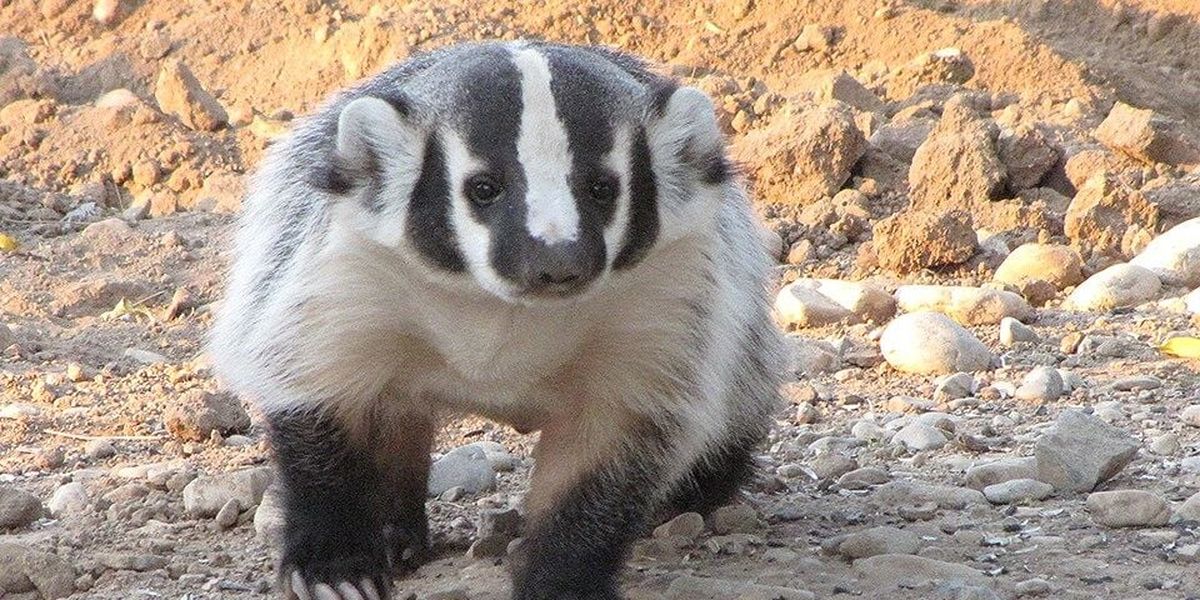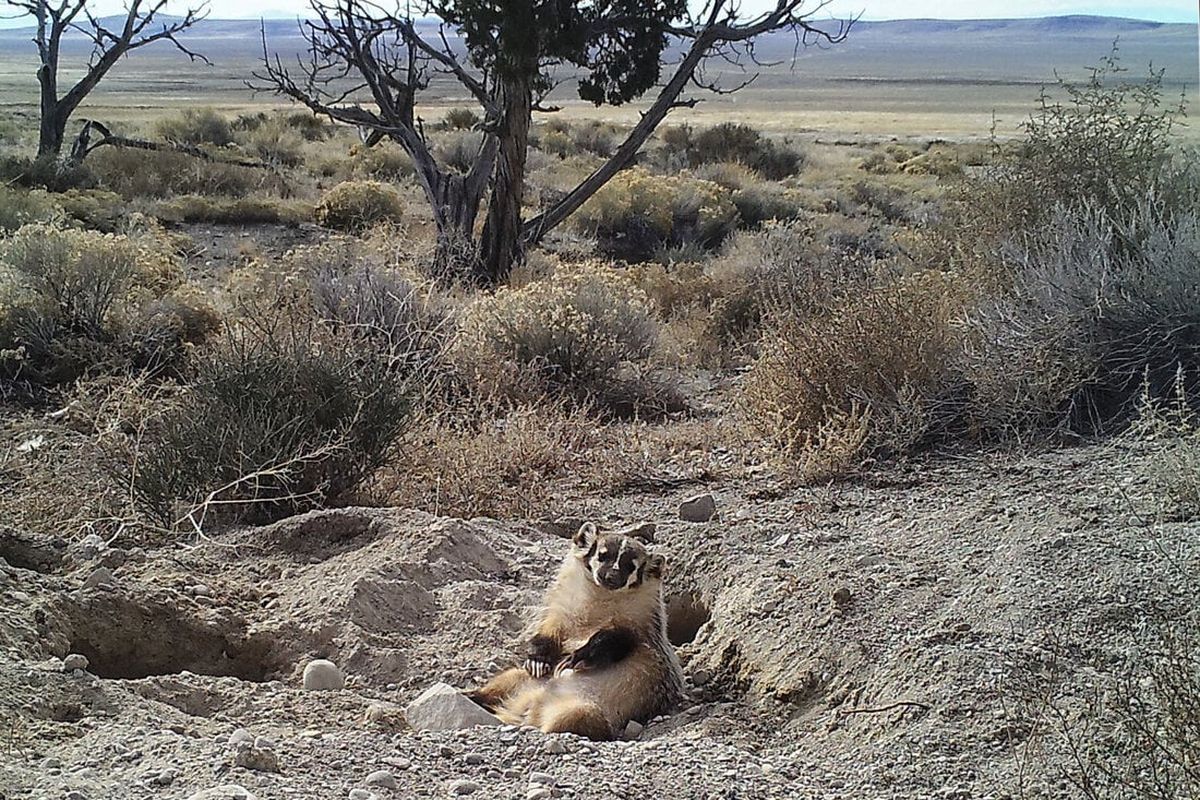Cool critters: Can you dig it? Badgers live here, but prefer life off the grid
The other critter with a white stripe, badgers, which live in Eastern Washington, are distinctive looking, but seldom seen. (U.S. Fish and Wildlife Service)
In the construction world, there are excavators, bulldozers and backhoes. In the animal world, there are badgers.
“Badgers are fast, powerful diggers,” said wildlife biologist Mark Vekasy of the Washington Department of Fish and Wildlife. “With muscular shoulders and forelimbs and large foreclaws, they can dig into the ground very quickly.”
Badgers dig to unearth burrowing rodents for food, to escape predators and storms and even to rest, he explained, adding that they also build dens, a complex set of tunnels and chambers where badgers live for much of the year and where they rear their young.
The American badger, scientifically called Taxidea taxus, is found in many parts of eastern Washington. A member of the weasel family, they pad their way across open grasslands, semidesert scrublands, forest edges, meadows and agricultural areas in search of food, which includes pocket gophers, ground squirrels, mice and moles.
Appearance-wise, the animal gives off a tough-guy vibe. About the size of a large racoon, it has a stocky, low-slung body covered in grizzled brownish fur. Its face sports a bold white stripe extending from its nose to forehead and down the back of the head. And its large, powerful-looking shoulders and thick 1- to 1½-inch front claws deliver a message: don’t mess with me.
These distinctive-looking creatures reside in numerous Eastern Washington counties, including Spokane, Grant, Douglas and Yakima, according to the wildlife-data connection network Washington Nature Mapping Program. And yet, it’s unlikely you will ever see one. Why is that?
Badgers are mostly active at night and typically emerge from their dens, called setts, shortly after dusk, Vekasy said. “They are also reclusive and try to avoid humans,” he explained. Provoke them, however, and you’ll see where their scary reputation comes from. When cornered, they will fiercely defend themselves and their offspring, he explained. Never mind that they weigh only 15 to 25 pounds – they’re armed with jumbo claws and ample muscular strength to fight back.
This tough-guy persona is also apparent when it comes to getting food. Wildlife experts long believed that badgers bury or “cache” small creatures such as rodents and rabbits to store for later consumption. But that perspective quickly shifted in 2017, when a video clip of a badger burying a cow in Utah racked up a million online views.
University of Utah researchers had set up trap cameras at the sites of seven cow carcasses in the Great Basin Desert to analyze foraging behaviors of avian scavengers. Within a week, one of the carcasses vanished. Clearly, not by a vulture or eagle. Then, while reviewing the trap camera’s photographs at the site, scientists discovered the cow was buried beneath the ground where they stood. In the time-lapse video that went viral, a badger goes on a five-day, dirt-flying digging spree, ultimately burying an animal many times its size.
“We didn’t go out to study badgers specifically, but the badger declared itself to us,” biologist Evan Buechley stated in a University of Utah news release.
Because these digging machines are seldom seen in person, you could say Lynne Nelson is indeed lucky. Twice she has spotted a badger on her semirural property in the town of Palouse.
She saw her first local badger in the pasture-like field behind her house as it ran through tall grasses to its den on the edge of her property, she recalled.
Then several years ago, Nelson, a veterinarian biologist at Washington State University, was walking up her driveway to go for a hike. Suddenly, she saw a badger “trundling down the driveway in my direction,” she explained. Nelson abruptly stopped, as did the badger, who appeared as startled as she was.
“Oh!” she uttered in surprise. After a few seconds locked in eye-to-eye contact, the short, squat badger turned and ambled away.
“I knew not to approach it and never felt threatened,” she said.
Today, Nelson would welcome that badger back. You see, badgers are among the only predators that can dig out deep-burrowing pocket gophers. And guess what? Some of those toothy rodents are destroying plant roots and bulbs in her garden.
A badger would excavate the gophers’ complex burrow systems. And once again, the dirt would fly.

